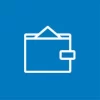Digital billing has long been offered in Switzerland under the e-billing standard. Over 2018 and 2019, the term eBill was widely adopted by Swiss banks to describe the service based on the e-billing standard.
Here, moneyland.ch answers key questions about using eBills to pay your bills in Switzerland.
1. How does an eBill work?
In order to get eBills, you have to request this billing option from the merchant in question. When you choose this billing method, eBills appear directly in your online banking portal. You do not have to type in reference numbers – this is completed automatically.
But unlike a direct debit, eBills are not automatically debited from your account without your confirmation.
In order for eBills to be paid from your bank account, you must first click on and approve each eBill individually. In most cases, you should not have to make any changes to the information on the eBill. However, you have the options of changing the amount charged or rejecting the bill altogether.
2. Which banks accept eBills?
More than 90 Swiss banks accept eBills. These include Bank Cler, the cantonal banks, Credit Suisse, Migros Bank, PostFinance, Raiffeisen, UBS and Valiant.
3. How do I activate eBill billing?
The easiest way to activate eBill billing is directly in your online banking portal or mobile banking app. Many banks give you this option, and let you choose the bills for which you want to receive eBills directly in online banking.
In most cases, your customer identifier number from the company which bills you is required in order to enable eBill billing for that company.
You can generally find your customer identifier numbers on your customer agreements with merchants or on existing bills.
4. How much does using eBills cost?
Banks do not charge you as a consumer for using eBill billing. However, companies which bill you via eBills must pay a fee of up to 50 centimes per eBill.
Some companies may pass on the cost of billing via eBills to you as the consumer.
5. How is an eBill different from a PDF bill?
PDF bills are typically sent to your email address. In some cases, they are made available for download from the merchant’s online portal and you must log in to the portal and download them.
You must then either print the bill and pay it using the attached deposit slip, or enter the information (account number, amount and reference number) in your online banking portal manually to pay the bill. In the case of QR-bills, you can also scan the QR code to read the information directly into your online banking portal.
The eBill is different in that your bills appear directly in your online banking portal or mobile banking app without you having to take extra steps. You have the option of downloading eBills as PDF files (to keep as receipts, for example).
6. What is the difference between an eBill and a direct debit?
With an eBill, you as the customer have to confirm each bill before it is debited from your bank account. A direct debit, on the other hand, is automatically debited from your account by the merchant without your confirmation.
However, the eBill does include an option of long-term confirmation. This option lets you define either a fixed amount or a maximum amount to be billed by a merchant without confirmation and a time period. When you activate this option, eBills are paid automatically over the selected time period without your having to confirm them individually – much like a direct debit.
7. Do eBills expire?
eBills remain in your online banking portal for at least 180 days after their expiry date. That is a major disadvantage of eBills, because they may be deleted after half a year.
8. What are the advantages of the eBill?
The main advantage of the eBill is that they save you time because you do not need to enter or scan payment information. That means no more typing in account numbers, payment amounts or reference numbers when paying bill online. You can pay your bills with just one click or tap.
If you prefer not to give companies the right to debit your account automatically, then eBills are advantageous because you can review bills before confirming them. Bills cannot be charged to your account without your confirmation.
9. What are the disadvantages of the eBill?
The biggest disadvantage of eBills is that they may be deleted by the bank after half a year. This means that unpaid bills may be deleted and no longer appear in your online banking portal. That may result in unpaid bills being forgotten and your being subjected to penalties or debt collection claims.
However, you have the option of downloading eBills as PDF files which you can print if you choose to.
Another disadvantage is the initial work involved with activating eBill billing for each merchant individually.
More on this topic:
QR-bill FAQ
Swiss private account comparison




